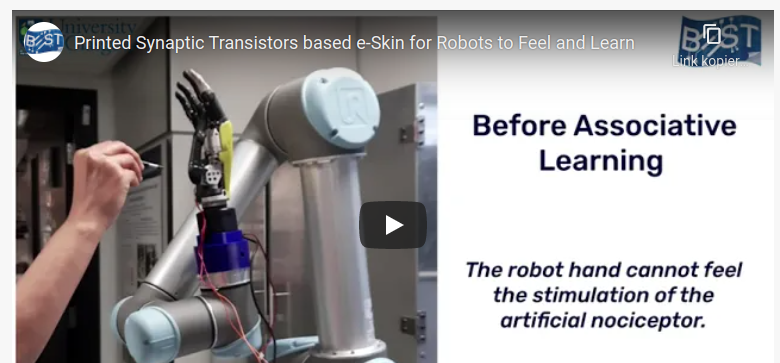
Breakthrough with electronic skin?
7. Juni 2022Breakthrough with electronic skin?
Glasgow, 7.6.2022
Engineers at the University of Glasgow have developed an artificial electronic skin that could pave the way for robots that sense their surroundings through touch.
The computer-based „e-skin“ is designed to mimic how sensory neurons work in humans. The skin was pulled over a robotic hand and showed a „remarkable ability“ to learn responses to external stimuli.
The prototype skin is based on a new type of processing that uses synaptic transistors. Unlike other forms of „e-skin,“ the system relies on distributed learning, so it doesn’t have to send messages to and from a central processor before an action can be performed. This speeds up the response to touches and reduces the computing power required.
This is a step forward in the university’s work to develop „neuromorphic printed electronic skin at scale,“ said Professor Ravinder Dahiya of the University of Glasgow’s Bendable Electronics and Sensing Technologies Group.
Their research was published in Science Robotics.
Translated with www.DeepL.com/Translator (free version)


